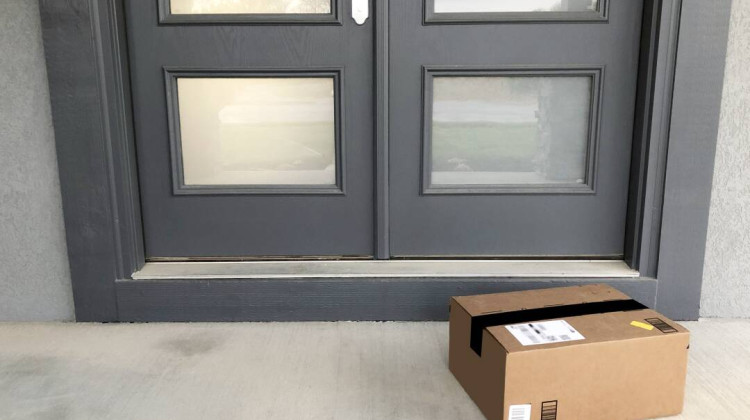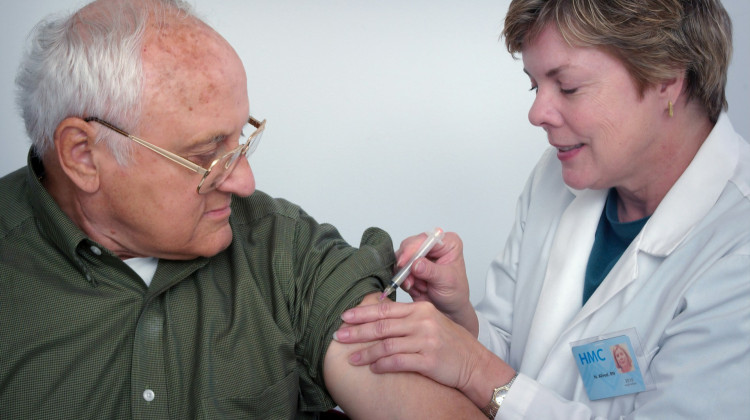
When medical tests and procedures are overused, they not only raise medical costs. They can lead to unneeded interventions and cause fear and anxiety over nothing.
Mart Production / Pexels
Dan Gorenstein, Ryan Levi – Tradeoffs
Dr. Meredith Niess saw her patient was scared. He’d come to the Veterans Affairs clinic in Denver with a painful hernia near his stomach. Niess, a primary care resident at the time, knew he needed surgery right away. But another doctor had ordered a chest X-ray instead.
The test results revealed a mass in the man’s lung.
“This guy is sweating in his seat [and] he’s not thinking about his hernia,” Niess said. “He’s thinking he’s got cancer.”
It was 2012, and Niess was upset. Though ordering a chest X-ray in a case like this was considered routine medical practice, Niess understood something her patient didn’t. Decades of evidence showed the chest X-ray was unnecessary, and the “mass” was probably a shadow or a cluster of blood vessels. These non-finding findings are so common doctors have dubbed them “incidentalomas.”
Niess also knew the initial X-ray would trigger more tests and delay the man’s surgery further.
In fact, a follow-up CT scan showed a clean lung, but picked up a suspicious “something” on the patient’s adrenal gland.
“My heart just sank,” Niess said. “This doesn’t feel like medicine.”
A second CT scan finally cleared her patient for surgery — six months after he’d come for help.
Niess wrote about the case in JAMA Internal Medicine as an example of what researchers call a “cascade of care” — a seemingly unstoppable series of medical tests or procedures.
Cascades can begin when a test done for a good reason finds something unexpected. After all, good medicine often requires some sleuthing.
The most troubling cascades, though, start like Niess’s patient’s, with an unnecessary test — what Ishani Ganguli, an assistant professor of medicine at Harvard and a primary care physician, and other researchers call “low-value services” or “low-value care.”
“A low-value service is a service for which there is little to no benefit in that clinical scenario and potential for harm,” Ganguli said.
Over the past 30 years, doctors and researchers like Ganguli have flagged more than 600 procedures, treatments and services that are unlikely to help patients: tests like MRIs done early for uncomplicated low back pain, prostate cancer screenings for men over 80 and routine Vitamin D tests.
Research suggests low-value care is costly, with one study estimating the U.S. health care system spends $75 to $100 billion annually on these services. Ganguli published a paper in 2019 that found the federal government spent $35 million a year specifically on care after doctors performed electrocardiograms (EKGs) before cataract surgery, an example of low-value care.
“Medicare was spending 10 times the amount on the cascades following those EKGs as they were for the EKGs themselves. That’s just one example of one service,” Ganguli said.
Cascades of care are common. A survey Ganguli conducted found 99 percent of doctors reported experiencing one after an incidental finding. Nearly 9 of 10 physicians said they’d seen a cascade harm a patient, physically or financially.
Yet in that same survey, Ganguli reported 41 percent of doctors said they continued with a cascade even though they believed the next test was not important for medical reasons.
“It’s really driven by the desire to avoid even the slightest risk of missing something potentially life threatening,” Ganguli said.
Low-value care critics say there’s a mindset that comes from medical training that seeks all the answers, and from compassion for patients, some of whom may have asked for the test.
As health care prices rise, efforts to root out low-value care keep emerging. In 2012, the American Board of Internal Medicine Foundation began urging doctors to reduce low-value care through a communication campaign called Choosing Wisely.
Over that time, about a dozen companies have developed software that health systems can embed in their electronic health records to warn doctors.
“We pop up an alert just making them aware of the care that they were about to deliver,” Scott Weingarten explained.
Weingarten worked as a physician at Cedars-Sinai Medical Center in Los Angeles for three decades and spent years lobbying hospitals across the country to tackle the problem.
He realized even the most sophisticated, well-resourced hospitals and physicians needed help developing new routines and breaking old habits, like knee-jerk ordering a chest X-ray.
Weingarten co-founded Stanson Health, a company that works with health systems to implement software tools known as “clinical decision supports.” Fewer than 10 percent of health systems have purchased this software for their electronic health records. And Weingarten said an internal analysis found the electronic warnings canceled unnecessary tests at his company only 10 to 13 percent of the time.
“The glass half full is you stick an app in the EHR and you eliminate 10 to 13 percent of low-value care, just like that,” said Weingarten, who has since left Stanson Health. “That could mean, if it’s rolled out across the country, [we could eliminate] billions and billions of dollars of waste.”
But that 10 to 13 percent also gnaws at Weingarten.
“Why do doctors reject this advice 87 to 90 percent of the time?” he asked.
Even with software warning physicians about unnecessary care, major barriers to change persist: a medical culture of more is better, doctors fearful of missing something, patients pushing for more.
Perhaps the biggest challenge: Hospitals still make most of their money based on the number of services provided.
Cheryl Damberg, a senior economist at the RAND Corporation, said what may get hospitals attention is money.
“If payers stop paying for certain low-value care services, it will definitely change the calculation about whether the juice is worth the squeeze,” she said.
Damberg said some commercial insurers and Medicare have started paying doctors bonuses to reduce specific low-value services and hold providers accountable for the total cost of a patient’s care. But those contracts are rare.
No one wants to deliver low-value care or receive it. But in American medicine, the pressure to “just do one more test” remains strong.
This story comes from the health policy podcast Tradeoffs, a partner of Side Effects Public Media. Dan Gorenstein is Tradeoffs’ executive editor, and Ryan Levi is a reporter/producer for the show, which ran a version of this story on June 9.
9(MDAyMzk1MzA4MDE2MjY3OTY1MjM5ZDJjYQ000))
 DONATE
DONATE







 Support WFYI. We can't do it without you.
Support WFYI. We can't do it without you.